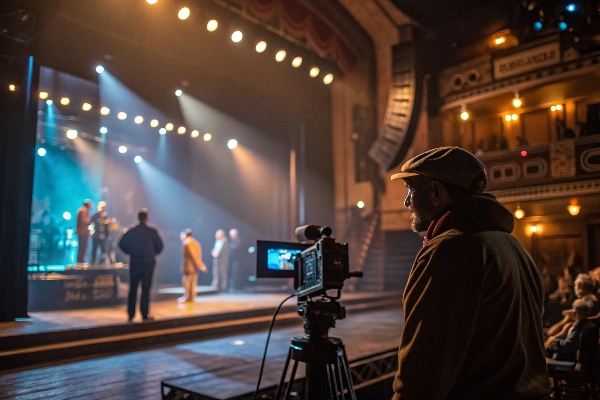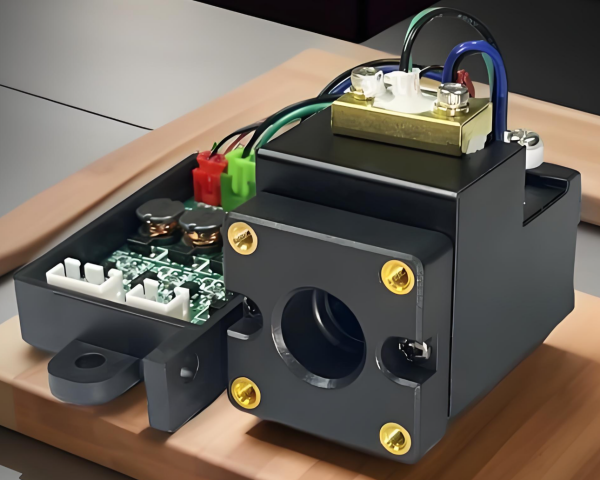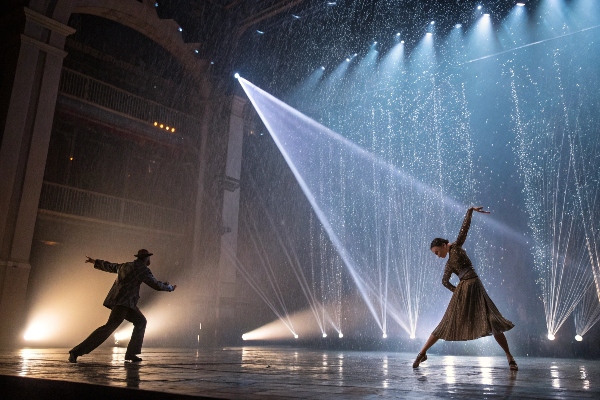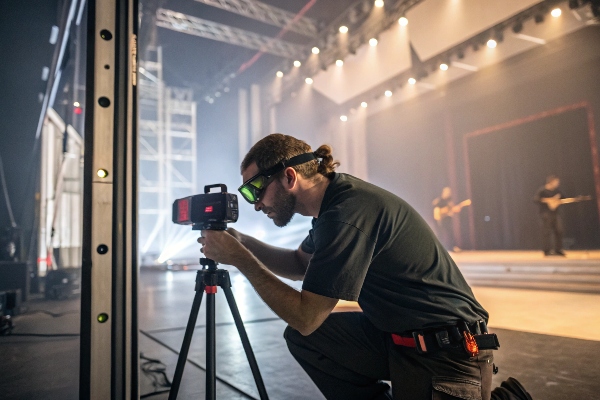Are you looking for a way to make your theater productions stand out? Viewers often lose interest fast.
Stage laser lights add vivid color, precision, and dynamic effects. They boost energy efficiency, create dramatic moods, and help direct focus. They can transform ordinary scenes into memorable visual spectacles.

Theatergoers want unique experiences. Stage laser lights offer crisp beams, great color control, and immersive backdrops. Next, we will explore why they matter and how they enhance performances.
Why is stage lighting important in theater?
Are you tired of shows that lack visual depth? Without good lighting, performances can feel flat.
Stage lighting shapes moods and guides attention. It highlights key moments and adds character to each scene. It helps the audience follow the story more closely.

Dive Deeper on Why Stage Lighting Matters
Stage lighting is not just a practical tool for visibility. It is also an artistic element that influences how a story unfolds. Good lighting can evoke strong emotions, such as tension, excitement, or romance. It can also separate one part of the stage from another, or unify them under a single theme.
Lighting designers think about color temperature, brightness, and timing. They work with directors and choreographers to match the mood of each scene. They decide which moments need warm, inviting tones and which need cold, harsh beams. They also consider angles that shape how shadows fall. All these factors affect how audiences perceive a production. Even a small shift in color can create a different emotional impact. For example, a deep red wash can signal danger or passion, while a soft blue glow can indicate calm or mystery.
Below is a small table that shows how different lighting choices affect scene interpretation:
| Lighting Choice | Effect on Scene |
|---|---|
| Warm Colors (Reds/Yellows) | Cozy, intense, or emotional mood |
| Cool Colors (Blues/Purples) | Mysterious, distant, or somber vibe |
| Harsh Shadows | Adds tension or heightens drama |
| Soft Diffused Light | Evokes calm or gentle transitions |
Stage lighting also helps focus the audience’s attention. Spotlights or narrow beams can isolate an actor during a powerful monologue. This keeps viewers from being distracted by other stage elements. When the entire stage is lit, the attention is more distributed, which can be helpful during large ensemble numbers. Precise lighting can also signal scene changes without pulling down the curtain. A sudden color shift or bright strobe might indicate a flashback or a dream sequence. This can add depth to storytelling without needing complicated set movements.
High-quality lighting can conceal or reveal scenic elements. Designers can hide props until the right cue. They can place the spotlight on small details that enhance the plot. This interplay of light and shadow can also add subtle layers to set pieces, costumes, and choreography. Even if the audience does not consciously notice every detail, it affects how they engage with the show.
My personal view is that stage lighting serves as the backbone of a performance. It ties together acting, stage design, and choreography. It sets the tone and communicates unspoken messages. When a show lacks a well-considered lighting plan, it misses an essential storytelling tool. Thus, stage lighting is vital for giving life to theatrical productions. It moves beyond functional illumination and becomes a transformative element that can elevate a simple stage into a fully realized world.
What are the advantages of using laser lights over traditional fixtures?
Are your current lighting fixtures dull or power-hungry? Traditional lamps might not give you the control or brightness you want.
Laser lights offer strong beams, flexible color palettes, and lower energy usage. They provide pinpoint accuracy and produce less heat, reducing long-term costs.

Dive Deeper on Laser Light Advantages
Laser lights bring a modern edge to theatrical settings. They use coherent beams of light. This means they can travel long distances without scattering much. Traditional fixtures, such as halogen or tungsten lamps, often generate scattered or diffused light. They can also require filters or gels to shift colors. By contrast, laser systems can create striking reds, greens, blues, or any blend in between with minimal color washout.
Energy efficiency is another key advantage. Conventional fixtures produce a lot of heat, which wastes electricity and might drive up cooling needs. Laser lights run cooler because their beams are more focused. This can mean lower energy bills and less strain on ventilation systems. Over time, the savings can be substantial, especially for theaters that run shows on a regular basis.
Below is a table comparing traditional fixtures and laser lights:
| Feature | Traditional Fixtures | Laser Lights |
|---|---|---|
| Brightness Control | Often requires external filters | Easy color mixing and high intensity |
| Heat Output | High | Low |
| Energy Consumption | Higher bills | Reduced operating cost |
| Beam Precision | Wide dispersion | Very focused and sharp |
| Lifespan | Shorter, more replacements | Longer diode life |
Laser systems also allow advanced control. Lighting operators can program effects through DMX or specialized laser software. They can sync beams with music, video, or special effects cues. This leads to shows that feel more cohesive and dynamic. Directors can choose quick strobe bursts, swirling patterns, or slow color fades to match the emotional arc of a scene.
Another advantage is size. Some traditional lights are large and heavy. Many laser units are smaller and more lightweight, which makes them easier to place in tight or strategic locations. They can mount on trusses or set pieces without needing excessive reinforcement. This frees you to experiment with creative positions that highlight choreography or scenic details.
Laser lights also help reduce the time and cost associated with color changes. Many older fixtures require gels that burn out or fade over time. Laser lights can shift hues with the press of a button. This saves labor and cuts down on consumables. It also lets you quickly adapt to changes in the show without having to re-gel fixtures during rehearsals or blackouts.
Maintenance for lasers can be simpler, though it is still important to keep them dust-free and aligned. Many laser units come with built-in cooling fans and safety interlocks. By following recommended service intervals, you can keep them operating reliably. This stable performance ensures that your show runs smoothly without flickering lights or surprise shutdowns.
All of these points make laser lights a wise upgrade for theaters that want modern effects and lower overhead. They bring powerful color, reduced energy use, and near-limitless creative possibilities. They do all this while helping you stay within your budget over the long run. In my experience, the return on investment can be remarkable, especially when you consider the audience impact. People are drawn to vivid and high-tech visuals that add excitement to each performance.
Can laser lights create realistic special effects?
Do your props or scenery fall short of creating believable worlds? Maybe you need extra realism in weather scenes or fantastical moments.
Laser lights can mimic phenomena like rain, stars, or glowing portals. With controlled color blending and projection angles, they bring striking effects to the stage.

Dive Deeper on Realistic Effects
Realistic effects go far beyond simple illumination. Directors often want to place audiences in the middle of a storm, under a glittering night sky, or inside a surreal dream world. Laser lights excel in creating these illusions because they can project defined patterns that stay crisp over distance. They can also merge with fog or haze for a volumetric look that fills the performance space.
Think about a scene that requires shimmering water reflections. Traditional lights might need special gels or rotating gobos. That process can be time-consuming and might not give a sharp or dynamic result. Laser fixtures can produce wave-like patterns that ripple and move. These can match music cues or follow an actor’s movement on stage. The effect immerses the audience. It looks more believable when combined with subtle sound design.
Here is a table of popular special effects that laser lights can enhance:
| Effect | Laser Method | Audience Impact |
|---|---|---|
| Rain | Vertical beams with light flickers | Feels like a sudden downpour |
| Starry Sky | Pinpoint beams in random patterns | Envelops the stage in starlight |
| Fire/Embers | Twinkling red-orange lasers in waves | Adds heat and drama to the scene |
| Futuristic Portals | Circular beam arrays with color shifts | Conveys sci-fi or fantasy worlds |
Lasers can show illusions of depth. Designers can angle multiple lasers so they converge on a single spot or fan out across the audience. This sense of shape can shift with the action on stage. It can highlight tension or wonder. For example, a swirling laser vortex could symbolize a journey through time. When actors step through it, viewers see a clear visual representation of crossing into another reality.
Some productions merge laser lights with projection mapping. This advanced approach lets images and laser beams overlap. The result is layered visuals that change in real-time with the performance. Audiences might see cityscapes unfold around dancers, or watch illusions that shift based on perspective. While this setup requires additional software and technical expertise, the end product can be jaw-dropping.
Laser lights also help emphasize motion. Designers can program them to trace the path of a dancer’s arm or highlight the silhouette of a stage combat sequence. These ephemeral outlines can add a surreal dimension. They can help viewers track movement even in complex choreography. Special filters can split beams into multiple lines or shapes, giving an otherworldly aspect that standard fixtures struggle to replicate.
In my opinion, realistic effects do not always need to replicate real-world visuals. They only need to make the audience believe in the onstage reality. Laser lights create that believability through clarity, motion, and drama. A critical step is planning. Proper coordination among the director, the choreographer, and the lighting designer is crucial. They must define the effect’s purpose, map it onto stage blocking, and make sure it aligns with the narrative.
When done right, these effects can enhance the story in ways that touch emotions or spark awe. They can also relieve the burden on set design. A smaller or more abstract set can come alive if the laser lighting sculpts the environment around it. This synergy can make your production stand out, leaving viewers with an unforgettable memory. Many times, people remember the enchanting or jaw-dropping visuals long after they leave the theater.
Are lasers safe for performers and audiences?
Do you worry about the safety risks of laser beams? Safety is a top concern for any live event.
High-quality lasers have safety features, like auto shut-offs and approved power levels. Following guidelines ensures no harm to eyes or skin. Operators must align beams properly.

Dive Deeper on Laser Safety
Safety is a priority for all theater professionals. Some people assume lasers are too dangerous for live use, but that is not accurate if you follow proper protocols. Manufacturers design stage lasers with built-in measures that control beam strength and alignment. Many models include shutter mechanisms that block the laser if it is misaligned or if a fault is detected. This helps prevent dangerous exposure.
Regulations vary, but many regions enforce strict standards. These standards dictate maximum permitted output for public shows. Operators often need to acquire licenses or certifications to run high-powered lasers. They must learn how to position lasers so they do not shine directly into people’s eyes. They must also track reflections from mirrors or glass surfaces. This might sound complex, but it becomes second nature with proper training.
Here is a table that outlines key laser safety elements:
| Safety Element | Importance |
|---|---|
| Certification | Ensures operators understand legal limits |
| Beam Blocking | Prevents accidental misalignment |
| Power Regulation | Keeps output within safe exposure levels |
| Eye Protection | Essential if adjusting lasers at close range |
| Signage | Warns crew and performers about laser zones |
Responsible operators maintain clear communication with directors and stage managers. They mark zones where beams move. They make sure performers know where to stand. They test angles during rehearsals to confirm that no one is in a direct path of a hazardous beam. Some productions use specialized costumes or props that bounce lasers around for unique effects. They confirm that reflective surfaces do not scatter beams unpredictably.
Venue size is another factor. Small spaces might need lower-power lasers or more angled setups to avoid direct audience exposure. Larger venues can use more powerful units. They have the space to position lasers far above heads or angled away from seats. Compliance with local regulations is crucial. Authorities might require a safety plan with diagrams. They might also require notifications if lasers will scan across the audience.
Accidents can happen if someone tampers with the equipment or if cables get damaged. So teams often do thorough inspections before each show. They check for secure mounts and stable power connections. They also calibrate the alignment. This routine ensures consistent performance. It also protects everyone on stage and in the seats. If an error occurs, well-designed lasers can shut off or switch to standby mode. This prevents any further danger.
I have seen how dedicated professionals treat laser safety with the same care as pyrotechnics or rigging. It is part of the production’s standard risk management. When you follow best practices, lasers can be used safely. They can deliver dazzling, eye-catching effects that create unforgettable moments. This attention to detail and safety also demonstrates a theater’s commitment to the well-being of its employees and guests. It builds trust and a reputation for high-quality performances.
How can I choose the right stage laser system for my production?
Are you unsure which laser setup best fits your show? Selecting the right model can feel daunting.
Look at power output, color range, safety features, and controller compatibility. Consider venue size, show style, and your budget. Compare different brands and ask for demos.

Dive Deeper on Choosing a Laser System
Selecting a laser system starts with defining your goals. Think about the scale of your production, the atmosphere you want, and how much control you need. If you plan to create sweeping beams or large aerial effects, you may need a higher wattage. If your stage is small or your show is intimate, a lower-powered laser might be enough. You must also consider color. Some lasers provide basic red and green beams, while others offer full RGB mixing for an expanded palette. This choice influences the variety of looks you can create.
Here is a table of factors to weigh when selecting a stage laser system:
| Factor | Questions to Ask |
|---|---|
| Wattage | How big is the venue? How bright do you need? |
| Color Capabilities | Do you want single-color or full RGB? |
| Safety Features | Are shutter controls and emergency stops included? |
| Control Options | Do you need DMX, ILDA, or custom software? |
| Budget | What is the cost of purchase or rental? |
Check for user-friendly control interfaces. Many lasers link seamlessly with popular lighting consoles or advanced software like QuickShow or Beyond. These programs let you design complex patterns, sync them with music, and integrate them into a broader light show. If you already have a lighting board, be sure the laser you want supports your protocols (like DMX or Art-Net). This avoids costly upgrades or time-consuming workarounds.
Venue constraints also play a big role. If your theater has low ceilings, you may need carefully angled beams. If your show tours, you want lasers that are portable, durable, and simple to set up. Look for rugged enclosures and well-built cooling systems. Also think about the environment. Hot climates or very dusty stages can stress certain laser units. A robust cooling fan and a sealed design help keep beams stable under such conditions.
Rental or purchase is another consideration. If you only need lasers for a short run, renting might be cost-effective. You gain access to the latest technology without a large investment. If your theater hosts many shows each season, buying can save money over time. Owning also grants you full control. You can practice new programs, store custom presets, and experiment with advanced effects at your pace.
You should also test the brand’s reputation. Check reviews or talk to other lighting designers. Does the product hold up during long performances? Is the company known for good customer service? Can you easily get spare parts if something fails? Industry contacts can provide honest feedback. You can also ask for product demos or watch sample footage. That way, you get a preview of beam clarity and color intensity in real conditions.
Finally, do not forget to factor in safety certifications. Make sure the brand complies with regulations in your region. A reliable supplier will give you all necessary documentation and guidance. This ensures you stay within legal limits and you do not get fined. When you add it all together—your production goals, venue details, control preferences, and budget—you can find a stage laser system that suits your vision. This choice can unlock stunning possibilities that help you amaze audiences and earn glowing reviews.
Conclusion
Stage laser lights bring vivid visuals, precise control, and lower power consumption. They create immersive atmospheres, dramatic effects, and safe but thrilling experiences that leave audiences awestruck.


